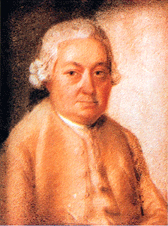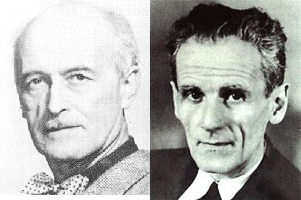Trivia
Famous flute works: concertos
The flute first gained popularity as a solo instrument in the first half of the eighteenth century. Many outstanding flautists emerged during this period, and in order to demonstrate their technical skill, they composed their own flute concertos. The flute was also the most loved instrument of the aristocracy of the eighteenth century. Many solos were then written for these flute aficionados.
C. P. E. Bach: Flute Concerto in A major
The second son of Johann Sebastian (the "Great Bach"), Carl Philip Emanuel Bach worked as court musician for Frederik the Great, the king of Prussia. Emanuel Bach left behind a total of five concertos for the flute-all of which are presumed to have been composed for the king. The passages which best show off the technical skill of the flautist are impressive, and after being championed by Jean-Pierre Rampal, one of the best flautists of the twentieth century, Bach's works became extremely well known. Incidentally, there are also extant versions of these concertos with solos for cello and harpsichord.

C. P. E. Bach (1714-1788)
W.A. Mozart: Concerto for Flute and Harp in C major, KV. 299
The best known flute concertos of the classical period-and of even the entire ancient and modern eras-are probably two of Mozart's works: Flute Concerto No. 1 in G major (KV. 313) and Flute Concerto No. 2 in D major (KV. 314). However, these are noted as works that give a leading role to the harp as well as the flute. Mozart composed this concerto during his stay in Paris in 1778, in response to a request to compose a concerto for the Duke de Guînes-a devotee of the flute-and his daughter, who was regarded as a talented harpist. The typically exquisite Mozart melody and the dialogue between the two solo instruments make for an extremely impressive piece. The second movement of this work was also featured in the movie Amadeus.
J. Ibert: Flute Concerto
Jacques Ibert, the modern French composer, left behind numerous concertos for wind instruments. As well as being the most famous of these works, his flute concerto is probably also the greatest masterpiece of the twentieth century. He composed the work in the early 1930s and dedicated it to Marcel Moyse, the foremost contemporary exponent of the flute. A sophisticated sense of rhythm and magnificent flute technique are showcased in the first and third movements. In addition, the second movement gives free reign to the wonders of the flute and overflows with the refined tones and flowing melody that are so typical of a French composer.

Left: Jacques Ibert (1890-1962)
Right: Marcel Moyse (1889-1984)
